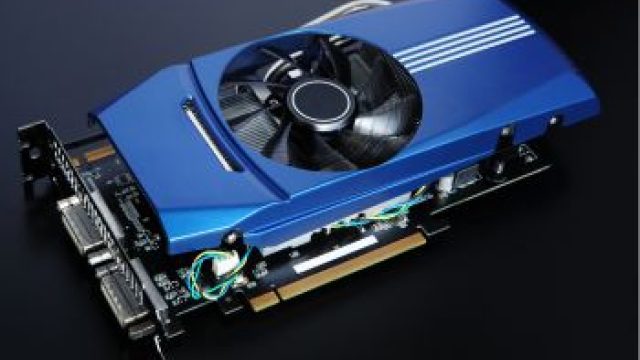Unveiling the Mystery of Laptop Screens with Weird Colors and Lines: Is Your Device in Trouble?
As we delve into the digital world, encountering technical glitches is an inevitable part of our journey.
One of the most perplexing issues laptop users face is witnessing strange colors and lines splattered across their screens.
Don’t panic just yet! In this blog post, we’ll explore the potential culprits behind this peculiar phenomenon, unravel the reasons causing it, and guide you through troubleshooting steps to restore your laptop’s visual clarity. Let’s dive in!
Common Causes of Weird Colors and Lines on Laptop Screen
Graphics Card Issues
One of the most common culprits behind weird screen colors and lines is a faulty graphics card.
The graphics card is responsible for rendering images and videos on your laptop screen. If it malfunctions, you may encounter distorted visuals or strange colors.
Display Driver Problems
Display drivers act as a bridge between the operating system and the graphics card.
When these drivers are outdated or corrupted, they can lead to various display abnormalities, including weird colors and lines.
Loose or Damaged Cables
Laptops are intricate devices with numerous internal connections.
Sometimes, a loose or damaged cable can disrupt the flow of data to the screen, resulting in visual anomalies.
Overheating Problems
Overheating is another common issue that can cause weird screen colors and lines.
Excessive heat can damage the internal components of your laptop, affecting the display’s performance.
Malware or Software Conflicts
Believe it or not, malware or conflicting software can also mess with your laptop’s display.
Viruses and malicious programs can alter the graphics settings, leading to unusual screen behavior.
Related Article: How Much Is It To Fix A Dell Laptop Screen
Step-by-Step Troubleshooting Guide
Now that we understand the potential causes, let’s delve into the step-by-step troubleshooting process to fix the weird colors and lines on your laptop screen.
Step 1: Check for Loose Connections
Begin by examining the external cables, such as VGA, HDMI, or DisplayPort, connecting your laptop to an external display.
Ensure they are tightly plugged in and not damaged. If you use an external monitor, check the connections there as well.
Step 2: Run a Diagnostic Test for the Graphics Card
Most laptops have built-in diagnostic tools that can help you test the hardware components.
Use these tools to perform a diagnostic test on your graphics card. If any issues are detected, it will guide you on the next steps.
Step 3: Update or Reinstall Display Drivers
Head to the laptop manufacturer’s website or the graphics card manufacturer’s website to download the latest display drivers. Install them and restart your laptop.
If you already have the latest drivers, try reinstalling them to rule out any corruption.
Step 4: Monitor the Laptop’s Temperature
Use temperature-monitoring software to check if your laptop is overheating during use.
If the temperature exceeds safe levels, try cleaning the laptop’s vents and fans to improve airflow.
Step 5: Scan for Malware and Potential Software Conflicts
Run a thorough antivirus scan to eliminate any malware that might be causing display issues.
Additionally, uninstall any recently installed software that might be conflicting with your graphics settings.
Related Article: Best Touch Screen Laptop Under $600
DIY Fix: Cleaning the Laptop Screen
If the troubleshooting steps above don’t yield any positive results, it’s time to take matters into your own hands.
Cleaning your laptop screen can sometimes work wonders in eliminating weird colors and lines.
Use a soft, lint-free cloth and a screen-cleaning solution to gently wipe the screen and remove any dust or smudges.
Advanced Solutions for Tech-Savvy Users
For those who are tech-savvy and willing to explore further, there are advanced solutions to consider.
However, before attempting any of these, it’s crucial to back up your data to avoid data loss.
When to Seek Professional Help
If you have tried all the troubleshooting steps and still haven’t fixed the issue, it’s time to seek professional assistance.
Experienced technicians can diagnose and resolve complex hardware problems and ensure your laptop gets the right treatment.
Preventative Measures
Prevention is always better than cure. To avoid encountering weird colors and lines on your laptop screen, follow these preventive measures:
- Keep your laptop in a cool, well-ventilated environment.
- Avoid using your laptop on soft surfaces like beds or couches that can block airflow.
- Install reputable antivirus software and keep it updated to safeguard against malware.
- Be cautious when installing new software to prevent potential conflicts.
Understanding Warranty Coverage
Before attempting any DIY fixes or seeking professional help, check your laptop’s warranty coverage.
If your laptop is under warranty, some repairs might be covered, saving you time and money.
Common Myths About Laptop Screen Issues
There are several myths surrounding laptop screen problems. Let’s debunk a few:
- Myth: “Hitting the laptop will fix the screen.” Reality: This can cause more harm than good, damaging internal components further.
- Myth: “Storing the laptop in the freezer can fix display issues.” Reality: Extreme temperatures can permanently damage your laptop.
- Myth: “Magnet therapy can solve screen problems.” Reality: Magnets can damage electronic components and should be kept far away from laptops.
User Experiences and Solutions Shared Online
Many laptop users have encountered and resolved weird screen colors and lines. Online forums and tech communities are treasure troves of valuable insights and solutions. Don’t hesitate to seek help or share your experiences online.
Tips for Extending Laptop Screen Lifespan
To ensure your laptop screen lasts longer and remains in optimal condition, consider these tips:
- Adjust screen brightness to moderate levels.
- Avoid leaving static images on the screen for extended periods.
- Shut down the laptop when not in use.
- Clean the screen regularly with a soft cloth.
Maintaining a Backup Routine
Backing up your important files regularly is a good habit regardless of any laptop issues. In the event of a hardware failure, you won’t lose precious data.
Updating Firmware and BIOS
Periodically check for firmware and BIOS updates from your laptop manufacturer’s website. These updates can improve the overall performance and stability of your laptop.
Environmental Impact of Laptop Repair and Replacement
If your laptop is beyond repair or too outdated to fix, consider recycling it responsibly.
E-waste can have a significant environmental impact, so recycling or donating your old laptop is a greener choice.
FAQs About Laptop Screen Has Weird Colors And Lines
How do I know if my bird feathers are healthy?
Healthy bird feathers are typically vibrant in color, with a smooth and glossy appearance. They should be well-structured, without any signs of fraying or damage.
Feathers that are intact and not excessively molted are indications of good feather health.
What do healthy feathers look like?
Healthy feathers are usually uniform in color, without any patches of discoloration or fading. They have a sleek surface and should feel supple to the touch.
Well-nourished birds exhibit feathers that have a natural sheen and radiance.
What do unhealthy feathers look like?
Unhealthy feathers may appear dull, tattered, or frayed.
They can be discolored, showing irregular patterns or patches.
Molting can be excessive or abnormal, and the feathers might lack their usual luster and smoothness.
What is poor feather quality in birds?
Poor feather quality in birds refers to feathers that are in a state of degradation.
This can be due to nutritional deficiencies, stress, illness, or poor environmental conditions.
Birds with poor feather quality may have difficulty with insulation and flight, leading to potential health issues.
What are the signs of an unhealthy bird?
An unhealthy bird may exhibit various signs, such as lethargy, loss of appetite, abnormal droppings, fluffed-up appearance, and changes in vocalizations.
Behavioral changes, breathing difficulties, and irregular feather patterns are also common indicators of an unhealthy bird.
What does a malnourished bird look like?
A malnourished bird might have prominent bones, especially around the keel (breastbone). Their feathers may be lackluster and sparse, and they might show signs of weakness and decreased activity.
A malnourished bird often has a haggard appearance and may have difficulties maintaining balance.
Why shouldn’t you pick up bird feathers?
Picking up bird feathers, especially from wild birds, is not advisable because they might carry harmful pathogens and parasites.
Additionally, in some regions, it is illegal to possess feathers from certain protected bird species without proper permits.
What does a sick bird look like?
A sick bird may appear weak and unsteady on its feet. It may have ruffled feathers, discharge from the eyes or nostrils, and an unkempt appearance.
Changes in behavior, such as increased aggression or withdrawal, can also indicate illness.
What do mites look like on feathers?
Mites on feathers can appear as tiny, crawling insects.
They might be difficult to spot with the naked eye, but their presence can cause feather damage, leading to poor feather quality and potential health problems for the bird.
Should I pick up feathers I find?
It is best not to pick up feathers you find, especially if you are uncertain about their source.
Feathers from wild birds may carry diseases or parasites that can be transmitted to humans or domestic birds.
Admire them from a distance and avoid handling them.
How do you keep bird feathers healthy?
To keep bird feathers healthy, provide a balanced and nutritious diet appropriate for the bird species.
Ensure a clean and stress-free environment, with regular opportunities for bathing. Regular veterinary check-ups are essential to address any potential health issues promptly.
Final Thoughts About Laptop Screen Has Weird Colors And Lines
Experiencing weird colors and lines on a laptop screen can be concerning, indicating potential hardware or software issues.
It could be caused by a faulty graphics card, loose cable connections, driver problems, or even physical damage.
Troubleshooting steps include updating graphics drivers, checking cable connections, and testing the laptop on an external monitor. If the problem persists, seeking professional help is recommended.
Remember to back up important data in case of further complications.
Promptly addressing screen issues can prevent further damage and ensure smooth computing. Regular maintenance and cautious handling of laptops can help prevent such problems in the future.


